Could more district heating schemes help tackle climate change?
- Published
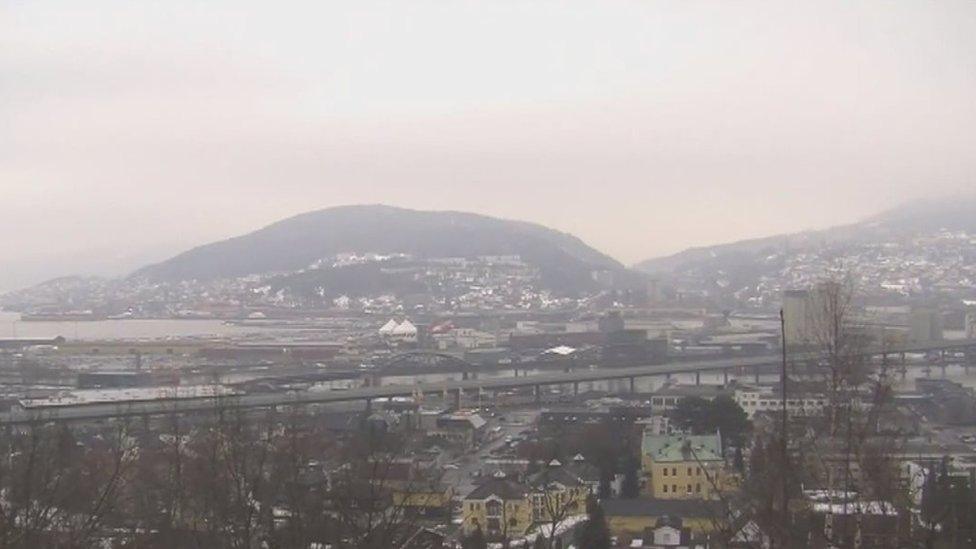
A district heating system using heat pumps provides 85% of the heating needs in Drammen, Norway
The Scottish government is due to publish its climate and energy plans in the next week. Ahead of that, BBC Scotland has been looking at two radical schemes proposed by environmental groups. The second is a district heating scheme used in Norway.

For most of us, heat is something generated within the confines of the homes we occupy; coal fires, gas-powered boilers, oil, electric storage units.
But in the town of Drammen in Norway it is a shared commodity, created off-site and piped into homes.
District heating is considered to be much more efficient - and therefore more environmentally friendly - than all of the above.
And if you can create that heat with less reliance on fossil fuels, the carbon footprint is reduced even further.
In Scotland, heat accounts for more than half our energy use and so decarbonising it will have to become a priority if climate change targets are to be met.
The irony is that while district heating is not in widespread use here, the system in Drammen was installed by a Scottish firm.
Glasgow-based Star Renewable Energy installed the heat pumps in 2010/11.
In simple terms, they work like a refrigerator in reverse, taking river water and cooling it down by about 4 degrees.
The heat extracted is enough to turn a sealed network of ammonia from a liquid to a gas which, through pressure, can heat water to 90 degrees.
That water is then piped into people's homes to heat their radiators.
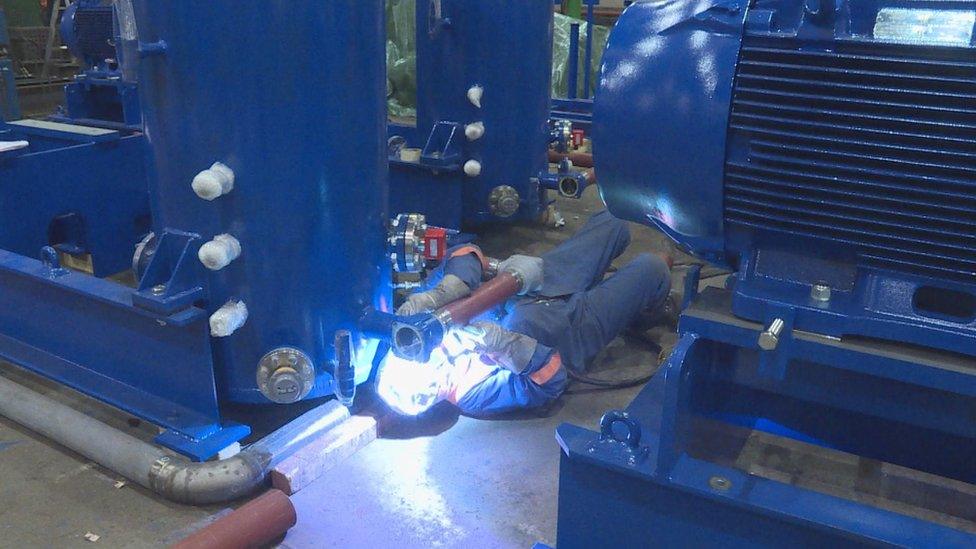
Technology for the Drammen scheme was designed and built in Glasgow
So why is such a simple idea not being used more widely?
Dave Pearson, from Star Renewable Energy, said: "I think it is a slightly abstract concept that we can harvest a river for heat. Rivers are quite chilly already.
"But really it's down to bringing a combination of technology which we're producing in our factory in Glasgow but also the imagination and the desire of the communities, the cities, the government to see better solutions."
Heat-pump technology is not carbon-free as it still needs to draw electricity from the national grid. That electricity is made from a combination of fossil fuels and renewable technologies.
If huge numbers of people shift from gas or oil-fired heating, it is going to place greater demands on the grid which is decarbonising.
In part, decarbonisation in electricity is caused by a reduction in consumption.
Relatively large-scale district heating systems do exist in some parts of Scotland but gas is the dominant fuel.
In Aberdeen, a combined heat and power network is used to heat 2,500 council-owned flats and public buildings while also selling electricity to the grid.
Generators create the power while the warm exhaust from the engines is used to create the heat.
Although there are no plans at present, ultimately it could be converted from gas to heat pumps using water from the sea.
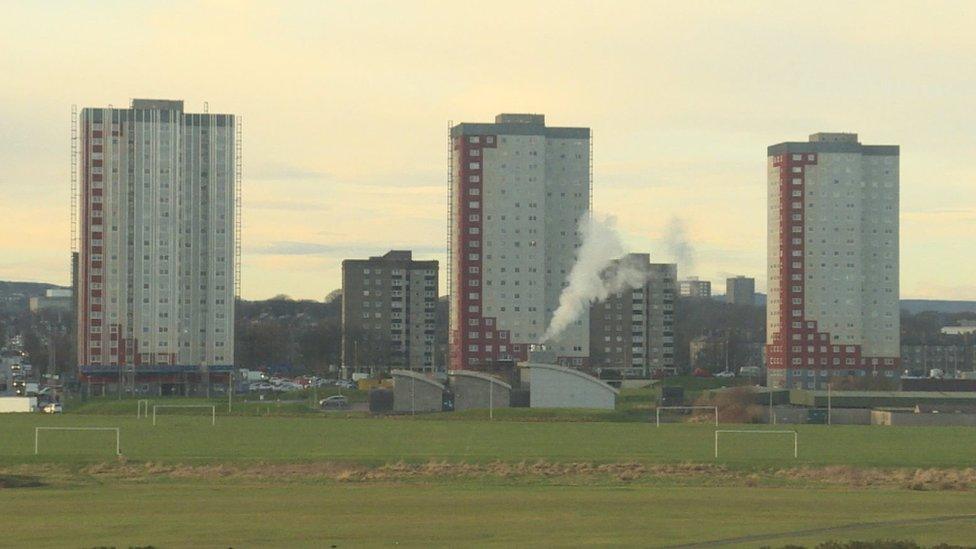
A gas-powered district heating system serves 2,500 homes in Aberdeen, as well as public buildings
Ian Booth, from Aberdeen Heat and Power, said: "Once the infrastructure is built you could actually bolt on at the front end other technologies as they improve.
"We're replacing electric heating systems with a combined heat and power fuelled system. The impact on the environment is about a 40% reduction on carbon."
In Norway, heat pumps rely on water from rivers and fjords which, around the surface, is about 8 degrees Celsius.
But Prof Janette Webb, from the University of Edinburgh, says Scotland has a source of much warmer water which could be exploited.
She said: "Right across central Scotland, not only have we got a lot of surface water we've also got underground mines, which are flooded now, which have water, in the deeper mines anyway, at about 30 degrees.
"We could extract heat from that water and use that to heat our buildings."
The details of how Scotland will meet its climate change targets will be published on Thursday afternoon.
- Published17 January 2017
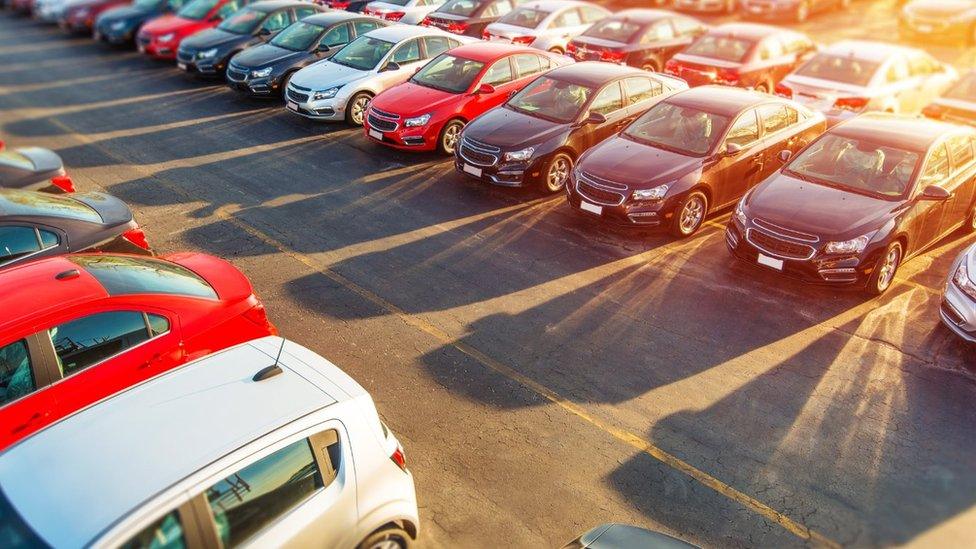
- Published22 November 2016

- Published15 November 2016
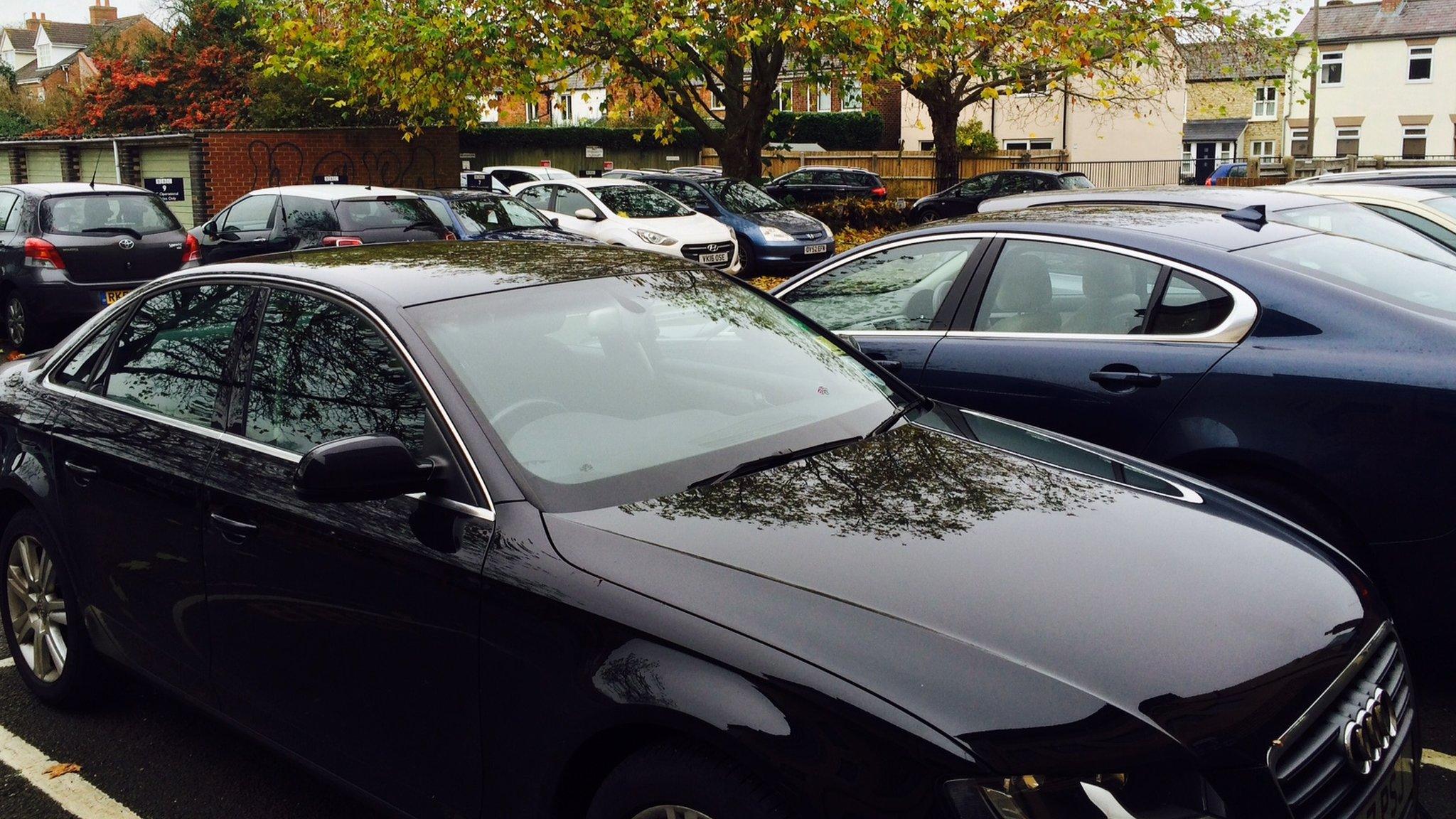
- Published1 April 2012
